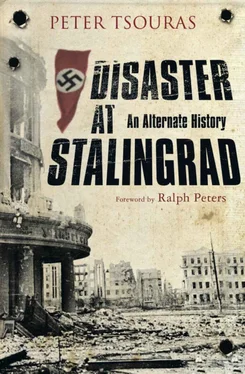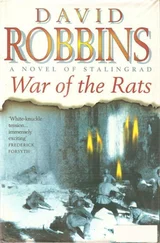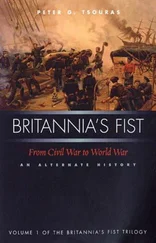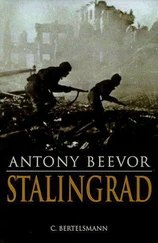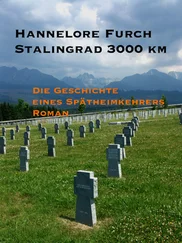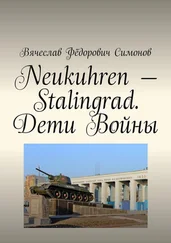He did not shoot the logisticians as he had the military intelligence officers who had tried to warn him of the German invasion. He had learned not to dispose of everyone who brought bad news. That only resulted in more bad news arriving in the form of nasty surprises. But their reports would have snapped the nerve of a lesser man.
The Soviets had barely survived 1941. Losses had been beyond enormous. The battles for Moscow alone had cost 2.5 million irrecoverable losses, a figure that would long remain a state secret, and at the same time millions of men of military age were now under German control. 21Huge areas of the most productive parts of the western Soviet Union had been overrun by the Germans. Of those thousands of factories that had been evacuated to the Urals, many were still in the process of reconstitution. Soviet war production was in a potentially deadly trough.
Soviet territorial, population, agricultural and industrial losses had been staggering. Every index of production showed a collapse after 1940.
Soviet 1942 raw materials production compared to that of 1940
Iron 32 per cent
Steel 44 per cent
Iron ore 33 per cent
Coal 46 per cent
Oil 71 per cent
Key elements of industrial production had also collapsed compared to 1940. Of the 145,000 trucks supporting industry, barely 35,000 were still operational. Of the 58,400 metal-working lathes working in 1940, only 22,900 remained. Electric power had been reduced from 48 to 29 billion KwH. Ferrous sheet metal production, of which modern mechanized warfare devoured vast quantities, fell from 13.1 million tons to 4.5 million.
Agriculture was in even worse condition. Of the 150 million hectares of sown area in 1940, barely 67 million remained in Soviet hands. The cattle herd had fallen from 55 to 28 million. Horses were still essential for agriculture and for the Army to pull its artillery and wagons, and of the 21 million available in 1940, only 8 million remained. These losses led to a collapse of food production.
Soviet 1942 foodstuffs production compared to that of 1940
Meat 38 per cent
Milk 47 per cent
Grains 31 per cent
Potatoes 31 per cent
Sugar 52 per cent
Vegetable oils 32 per cent
Eggs 37 per cent
Unconsciously, not a few Soviet senior officers thanked God for the aid pouring in from the Western Allies. The British had made extraordinary efforts after the invasion of the Soviet Union. Churchill had said in the House of Commons that if Hitler had invaded hell he would find something favourable to say of the devil. Churchill loathed the Soviet Union as the totalitarian thug that it was, having attempted to strangle it in its cradle after the Bolshevik Revolution. Yet he recognized that the enemy of his enemy was for the moment his friend, and that Germany could not be defeated without the Russians. Otherwise the long night would close on Western civilization. Strategic necessity is rarely pretty.
This aid was sent by Arctic convoys at a time when British resources were being stretched to the limit after they had been driven from the continent at Dunkirk and in Greece. It was sent even though it meant starving the desperate struggle in the Western Desert that defended Egypt and the Suez Canal, the lifeline to the British Empire in India and beyond. Tanks that could have given short shrift to Rommel were winched off British ships at Murmansk and Archangelsk. The British people had almost no replacement clothing because of the vast amounts sent to Russia. By November 1941 locomotives by the hundreds and railcars by the thousands had been shipped to strengthen the Iranian State Railway as an additional route for aid to the Soviet Union. By that month, by Russian admission, British and American aid was exceeding Soviet production. 22Even though the loss of Malaya in early 1942 cut off the British supply of rubber, they shared their own precious reserve with the Soviets.
Despite this outpouring of aid, which left the British with a desperately slim inventory of their own, Stalin demanded more and more. He wanted 30,000 tons of aluminium immediately for the engines for Soviet tank and aircraft factories. He wanted a monthly quota of 500 tanks and 400 aircraft and belittled the equipment that was sent at such cost. Churchill firmly rebuffed these outlandish demands and stated to Stalin that any precipitate action would lead to disasters that would help only Hitler. Nevertheless, he did arrange for 5,000 tons of aluminium to be shipped from Canada with another 2,000 tons to follow each month. 23
The British deliveries came from their own production and from their allocation of Lend-Lease aid from the United States. In late September 1941 the Anglo-American Supply Commission travelled to Moscow and was treated coldly. In consequence, Churchill asked President Franklin Roosevelt to increase aid to the Soviets. Roosevelt promised that from July 1942 until January 1943 the United States would deliver to Britain and the Soviet Union 1,200 tanks a month, rising to 2,000 a month thereafter. He promised aircraft deliveries of 3,600 a month as well. 24
From October 1941 to 30 June 1942, the Soviets had received most of the promised 1.5 million tons of aid. Over 83 per cent of it came across the Atlantic to the Arctic ports of Murmansk and Archangelsk. The rest came first by ship and then overland through the Persian Corridor into Soviet Azerbaijan, and by a third route across the Pacific in Soviet ships from American ports, undisturbed by the Japanese who wished to stay out of the war with the Soviet Union. 25Most of the Soviet ships were in fact chartered American ships conveniently reflagged with the hammer and sickle. 26
Soviet losses in the first year of the war had been so severe that Allied aid was vital. In 1941-2, Allied-provided (mostly British) tanks amounted to 15 per cent of the total Soviet tank force. The first Lend-Lease cargoes arrived at Russian northern ports in November 1941 carrying 59 Curtiss fighter planes, 70 M3 light tanks, 1,000 trucks, and 2,000 tons of barbed wire. Convoy PQ-16, which sailed in May 1942, delivered 321 tanks and 2,500 trucks in addition to huge amounts of general cargo. Most of the military equipment was employed in the areas closest to the ports — around Leningrad and Moscow — in order to minimize the already grinding strain on Soviet railways.
American-provided supplies and war materials far exceeded the tonnage of actual weapons. Already, American trucks and jeeps were becoming ubiquitous, coming in a stream that filled a vital gap left by Soviet losses and anaemic production.
It was precisely in these areas of sustenance and transport that Lend-Lease was so vital to the Soviet war effort. If soldiers are malnourished or cannot be moved expeditiously about the front, the importance of tank and other weapons production pales.
The Soviets had indeed made heroic efforts to maintain production, but 1941 had been devastating. Not only were large industrial areas lost, but 1,500 factories had been moved to the Urals ahead of the Germans and were out of production for many months. By early 1942 production had resumed on a large scale.
Whole new populations were drafted to replace lost industrial workers as factories ran around the clock. Women, ‘fighters in overalls’, shouldered much of this work. The Soviet bureaucracy was as indifferent to their welfare and safety as the generals were to their soldiers’ wellbeing. Yet out of this supreme achievement came 11,000 tanks in the first six months of the year. 27This concentration on weapons production came at a great price. The Soviets simply did not have the resources to build a balanced force.
Sustaining production and the forces in the field, however, was the vital Allied contribution to the Soviet war effort — specialty steels and other metals such as aluminium (without which the engines for Soviet tanks and aircraft could not have been made), machine tools, munitions, and the explosive components of munitions. The American chemical industry was able to produce almost immediately a huge volume of explosives that the Soviets simply could not have replaced. These were the calories of war.
Читать дальше
